Sunday Randoms - Sea Otter 2018
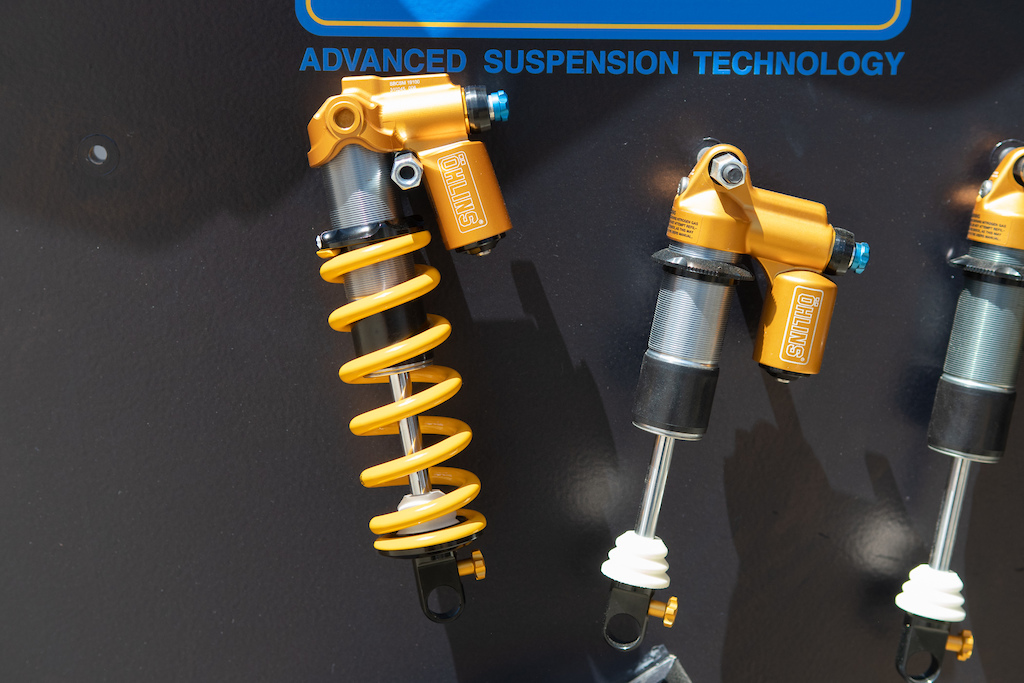
Ohlins' TTX22 shock is now available in a trunnion mount version, and also gets a new spring collar and bottom out bumper.

Microshift have a new version of their clutch-equipped 11-speed derailleur on the way. They claim the clutch is extremely durable - it uses a series of pawls to add tension to the cage.

Pivot's popular Switchblade is now available in aluminum, which drops the price significantly. According to Pivot, the aluminum frame is actually stiffer than the carbon one.

Intense's M29 ended up on the podium at the first World Cup DH race of the season; not a bad way to kick things off.

The Bomber Strap is a different take on the traditional tailgate pad. Designed for one or two trail bikes, the strap is made from ballistic nylon that's sewn around foam padding. Ryan Cleek photo.
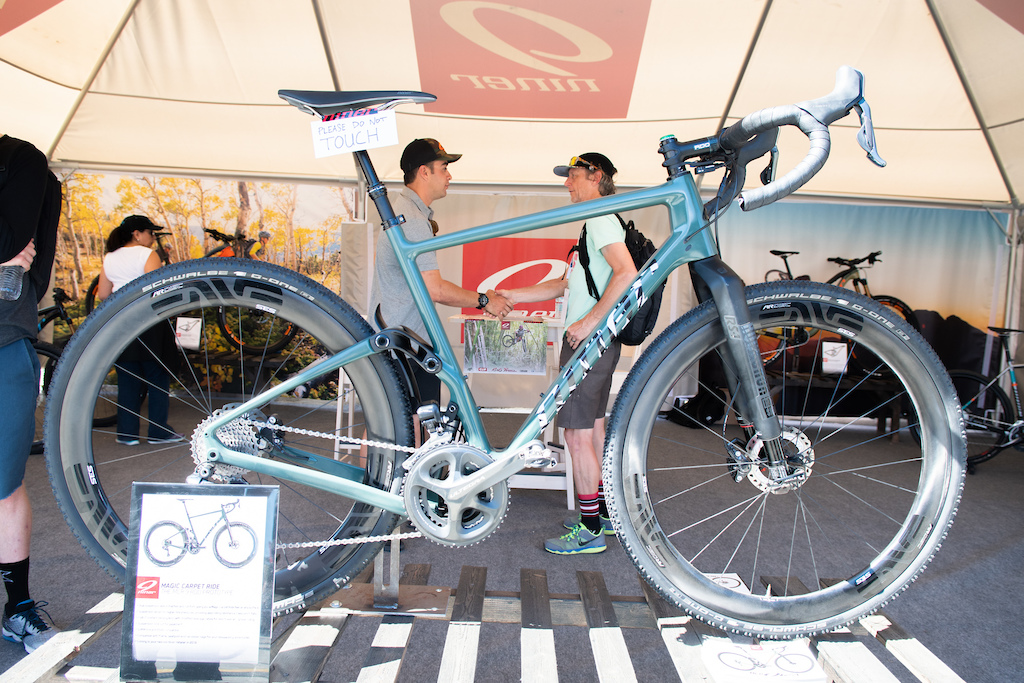
A full-suspension gravel bike? It turns out that's a thing, and Niner are working on one called the Magic Carpet.

Speaking of gravel grinding, X-Fusion had a short travel version of their Manic dropper post that's designed to work with drop bars - the lever sits to the inside of the hood.

The Revel inverted fork has been teased at nearly every tradeshow for the last three years, but it's now in stock and officially for sale.
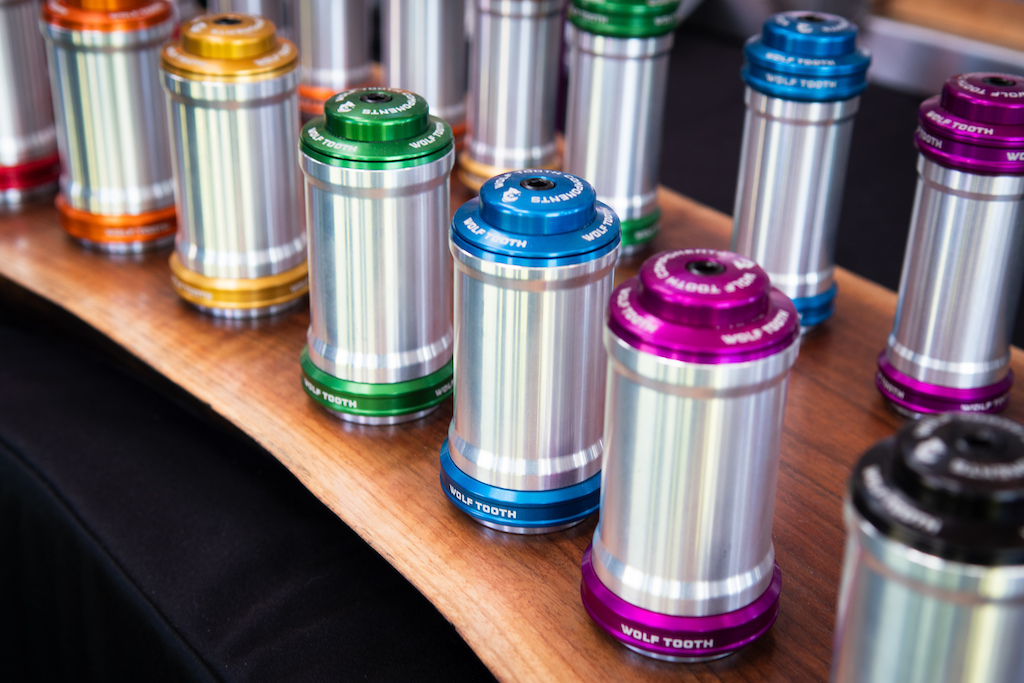
Wolf Tooth Components are entering the headset market with an assortment of brightly colored options. The cups are machined in USA, and equipped with stainless steel Enduro sealed cartridge bearings.
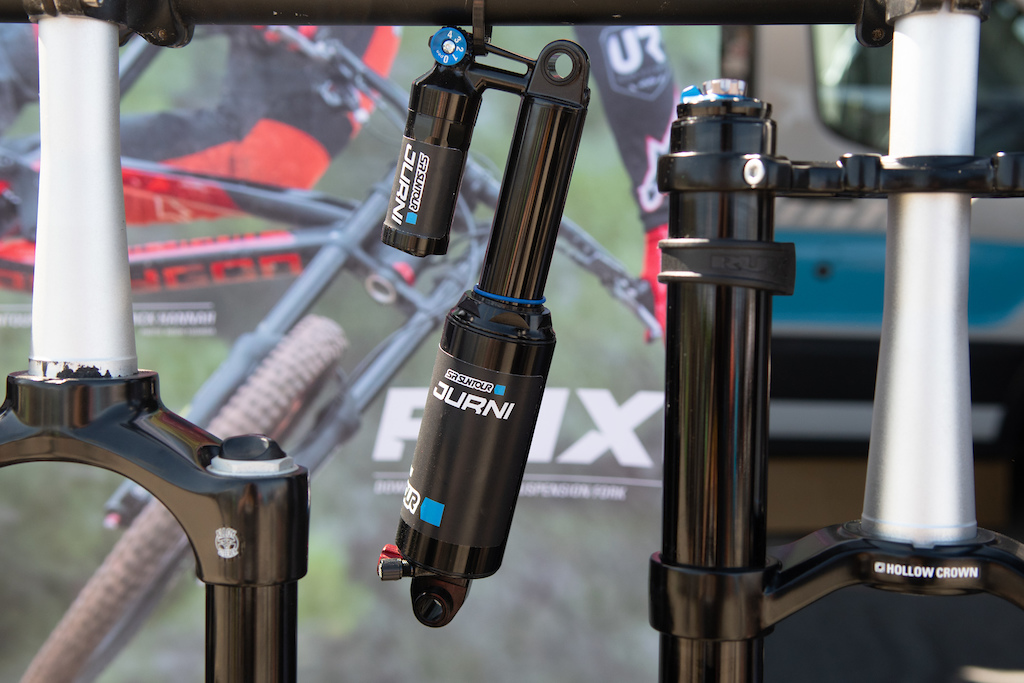
SR Suntour's gravity athletes will be using the new Jurni air shock this season. The shock has externally adjustable compression and rebound, and the air volume can be adjusted by sliding the air can off to add or subtract spacers.
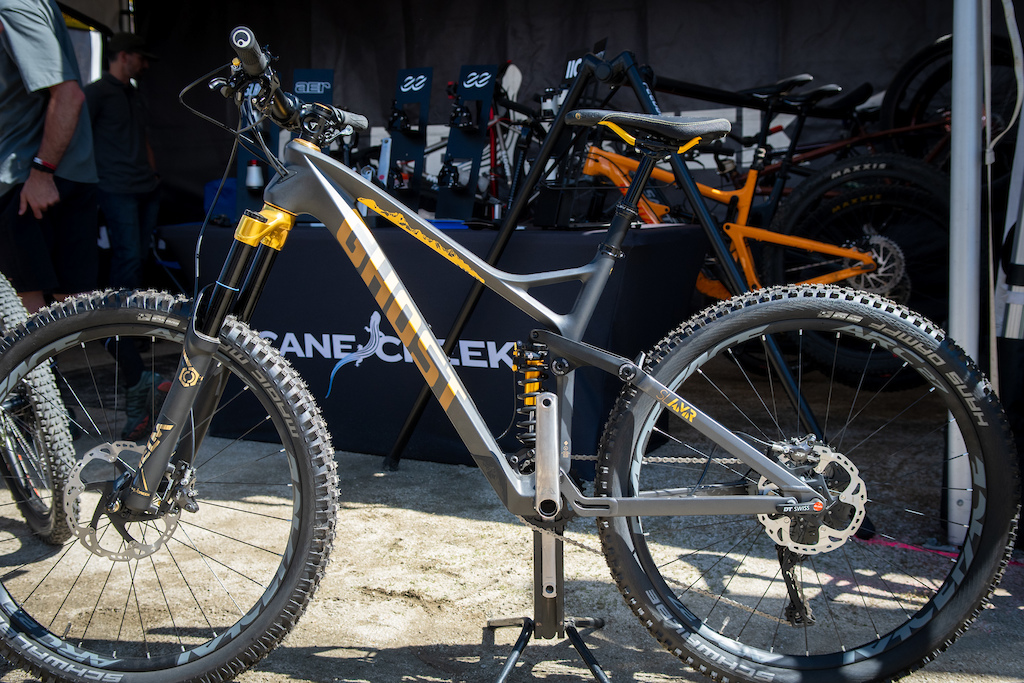
Cane Creek had this Ghost decked out with all of their goodies, including a Helm fork, DB Coil shock, and eeWings titanium cranks.

Zerode are going to be offering a shorter travel version of the Taniwha, with 140mm of rear travel. It's the same frame as the longer travel version, but with a lighter build kit and a more lively ride feel; it's meant to be more of a trail bike rather than an all-mountain / enduro smasher.

Xpedo always have a bunch of pedals on display that have received an oil-slick finishing treatment, like this Baldwin pedal.

Want to impress your ten-year-old? Take him to work and have him help you create aluminum building blocks. At least that's what Jason Quade, the founder of Abbey Tools, did. The blocks were just a side project, an exercise in creativity more than anything else, which means that they're not something you can buy.

Abbey Tools' 4-way multi-tool has four fixed bits, and is available in a variety of configurations for $40.
MENTIONS: @SeaOtterClassic
Author Info:
Must Read This Week
Sign Up for the Pinkbike Newsletter - All the Biggest, Most Interesting Stories in your Inbox
PB Newsletter Signup








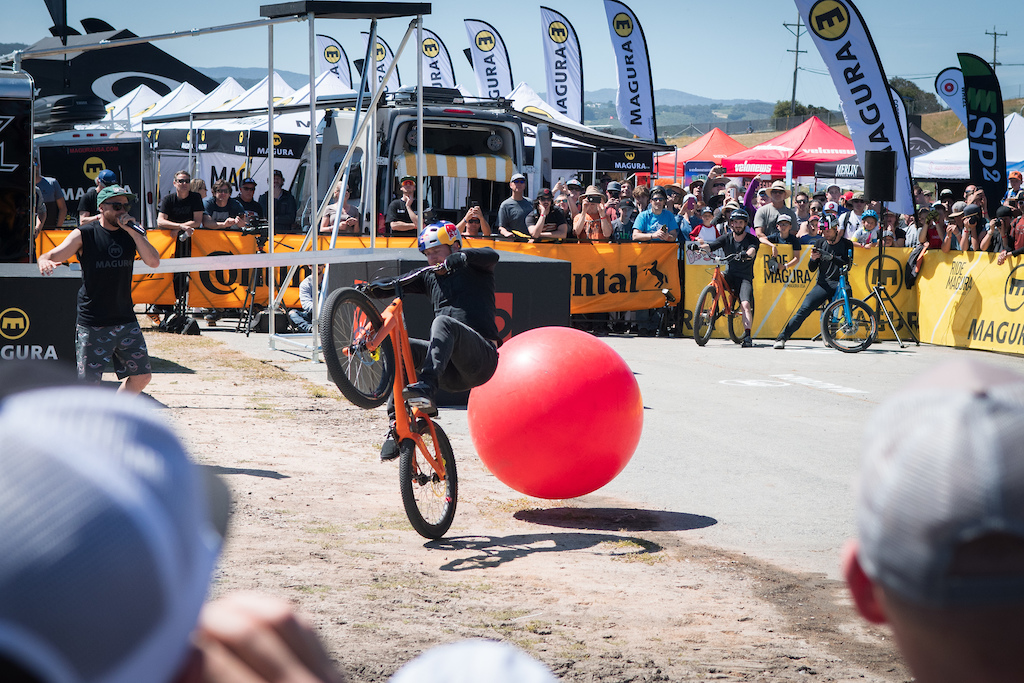

He doubled the distance for "walking on legos" Guinness World Record...sounds ridiculous? It is
"Awesome! What are you calling it?"
"xPedo"
"Ohhh... Ummmmkay"
www.on-lynecomponents.com/collections/nana-hammock/products/nana-hammock-black
Marketing director: Okay, guys, we have a problem. People are ridiculing us for the name of our new tire.
Intern: Well, why don't we clear things up by making Minaar look like a superhero.
Marketing director: hmmmm
Intern: . . . and we can put him in tights!
Marketing director: Perfect!
Last week my bike fell off the bike carrier on the freeway. I think the steerer tube has moved in the crown. I've sent it away to be inspected. If it's bent, it will be new fork time, and what a time to buy! New fox 36 with the grip 2 damper, marzocchi z1 with the old grip damper, cane creek helm coil, x fusion revel, DVO hopefully soon to release the onyx SC (any news on the release of that one @dvosuspension?)
What a year for fork customers!
That said, considering the number of brands that have actually been dabbling with protypes etc it apparently isn't as easy or great as the theory/marketing implies. The challenge is the connection between left and right stanchion. One solution is to use a fork guard that connects the two, but I don't know whether DVO holds that patent. The other is to use a larger diameter hub axle. Curnutt used a 30mm axle for a reason. But even if this is the best solution, no marketing manager dares to step into the Pinkbike pit, surrounded by keyboards and rotten tomatoes and admit:
"Hi there, we'd like to introduce our new, progressive, ehrm... axlestandardokthanksbye!|
I partially agree with your comment on 15mm axles, but I do think the move 100mm wide was a good one. Except for cup and cone bearing hubs (which typically are dedicated for the width), the additional 10mm (of conventional 20x110) brings no advantages if the bearing and flange distances remain the same. Yeah, nice you can convert them between the two but it implies you've lost the advantage of the extra width. I'd say it is even worse as the load trajectory got longer. I actually believe that the never 20x110 boost is actually what the "old" 20x110 should have been right away. And well, 15mm turn out to be a nice solution for more weight oriented components. The larger axle requires a larger bore in the fork lowers, which again require a bigger reinforcement. So yeah, it has its place. I've got a couple of older 20x110 forks and hubs so I've got reason to stick to "old" but if I came in fresh into the sport I'd see no point in old 20x110 over the boost version. And I see no reason for the "old" 110 spread over the newer 100 if it were used with cartridge bearing hubs.
As for the Lefty, I think it is a clever fork which make people more likely to accept that it needs its own hub for it to work. Having to remove the brake caliper to remove a wheel does seem like a hassle though. It is a bit like a car so I'd go all the way. Leave the bearings, brake rotor etc onto the fork and only slide the hub shell (with attached spokes etc) on and off. If the advantages are clear, more people are willing to accept a new standard.
Now we come back to the lighter argument because it ain't stiffer!? Come on... LOL
BUT @vinay is right, if you can't even touch the bike then what good would it be, maybe that why they call it the magic carpet, you are just supposed to hover slightly above it.
That is, instead of putting phat tyres, dropper posts and suspension on gravel bikes, you start putting tall gears, narrow tyres and drop handlebars on an XC MTB frame?
DJ forks with 15 mill axels.
As consumers we asked for this correct?
I'm sure they also spec'd it with a threaded BB because that's what you do, right? Right?
dammit
I run a clutch derailleur but on a low anti-squat (or doesn't pedal well the shat bricks say on Pinkbike) Specialized. On a VPP etc with lots of chain growth, every time that suspension extends its working against that clutch. It's not an insignificant amount of force, especially for lighter riders. Not ideal at all. I've often wondered if a traditional derailleur with adjustable tension would be better for said bikes. Then it could be accurately tuned to just enough tension and there wouldn't be that clutch stiction to overcome.
Guess what???? No dropped any chains.